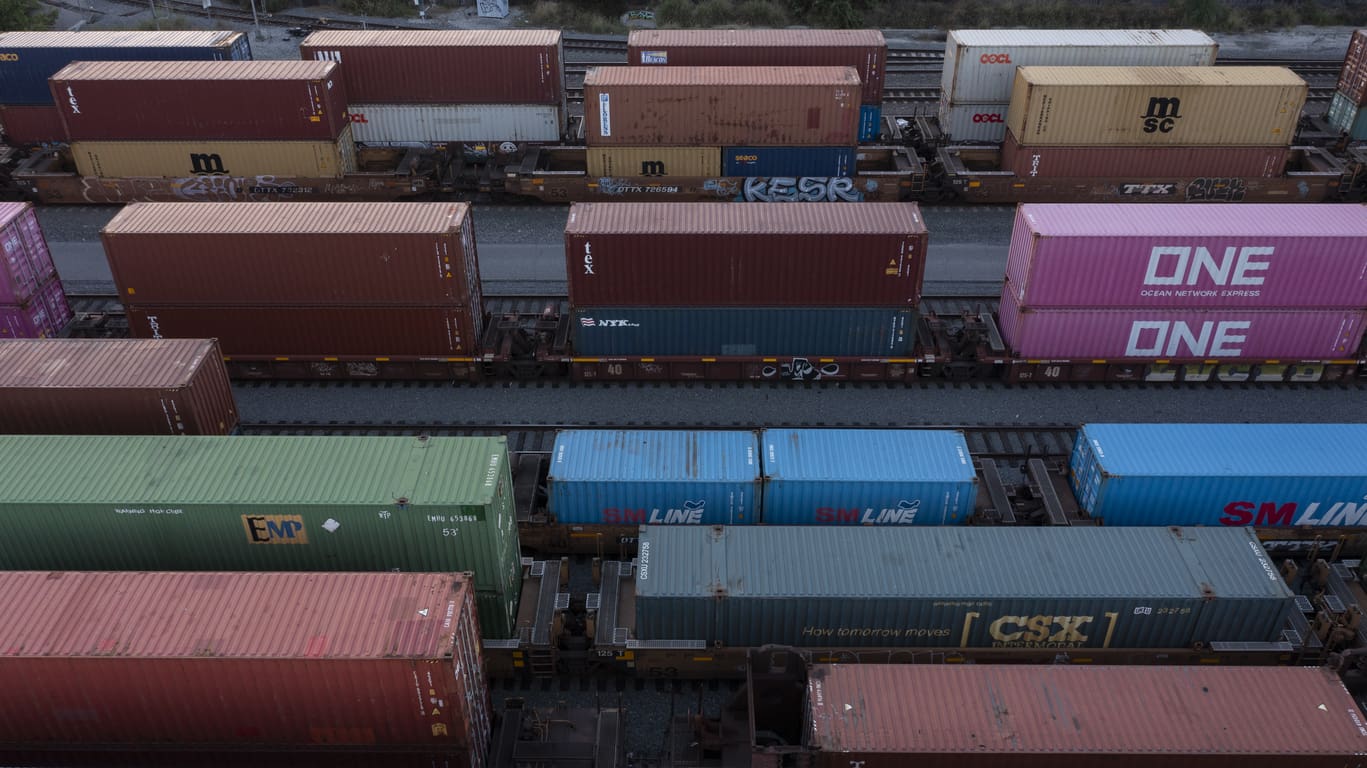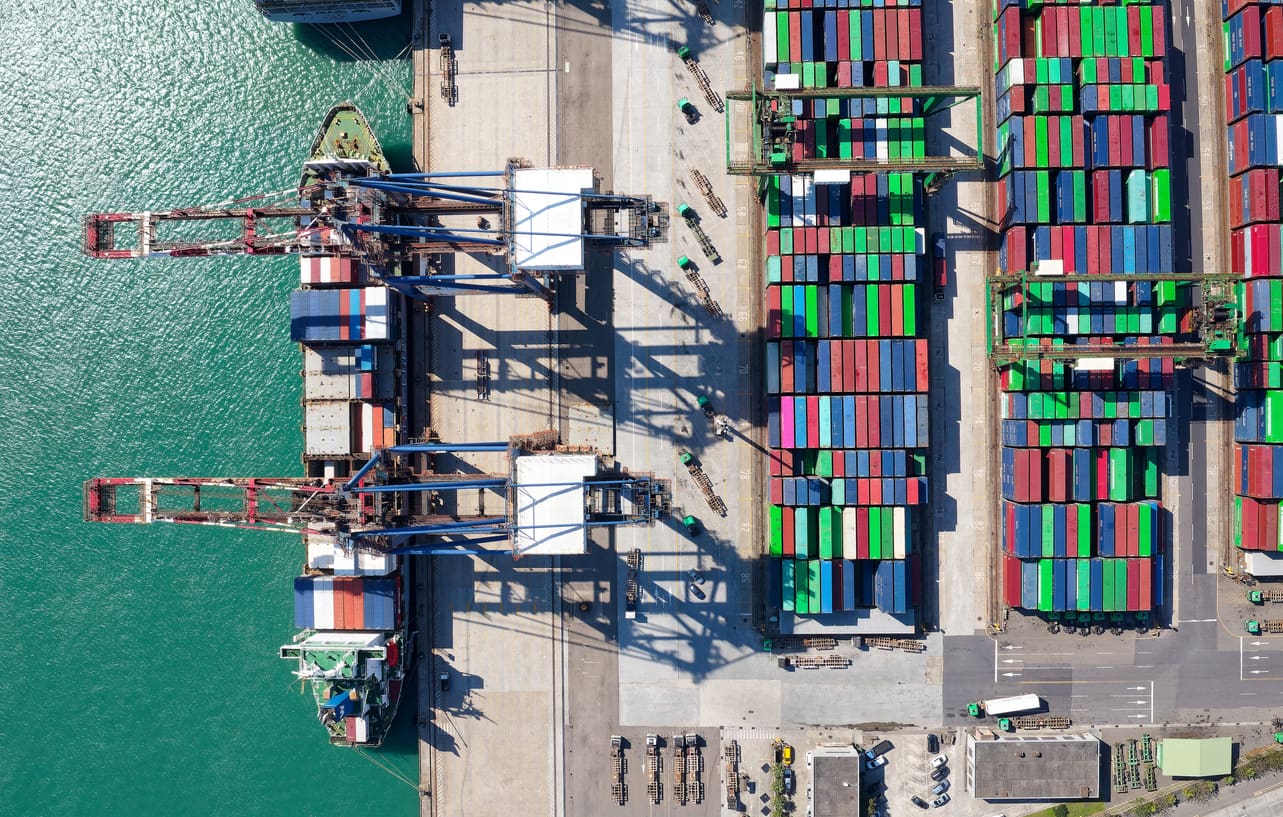Feeling the squeeze from new import duties? You’re not alone. Many businesses are grappling with the challenge of figuring out how to fit tariffs into their financial forecasts. If you’re staring at your spreadsheet wondering exactly how to add tariffs into a financial model, this should be a helpful resource. Follow along to explore the impact to your costs, profitability, and overall financial performance.
Tariffs can seem like an unexpected hurdle, especially if your business relies on international suppliers and global supply chains. One day your costs are predictable, and the next, a new policy or regulation throws a wrench into them.
With an orderly approach, you can account for these additional costs to make smarter decisions and reduce uncertainty. The good news is that this process will actually strengthen your financial model, so let’s go ahead and get started.
Table of Contents
- Understanding Tariffs and Their Impact
- Before You Touch Your Financial Model: Prep Work
- How to Incorporate Tariffs into a Financial Model: Step-by-Step
- Beyond the Spreadsheet: Strategic Responses to Tariffs
- Conclusion
Understanding Tariffs and Their Impact
Before you start editing your spreadsheets, it’s important to grasp what tariffs really are. Knowing these basics helps you see how they ripple through your financial statements.
What Exactly Are Tariffs?
Tariffs are essentially taxes imposed on imported goods. Governments utilize them for different reasons, from protecting domestic industries from foreign competition to simply generating new revenue. Sometimes, they’re used as a lever in trade policies and negotiations. There are several types of tariffs you might encounter.
Ad valorem tariffs are calculated as a percentage of the imported goods’ value. Specific tariffs are a fixed fee per unit, like per kilogram or per container. Compound tariffs combine both ad valorem and specific duties.
You can usually find detailed information on specific tariff rate structures through government resources like the U.S. International Trade Commission’s Harmonized Tariff Schedule, which details how tariffs are applied to lots of different things.
Why Do Tariffs Suddenly Matter So Much?
Tariffs aren’t a new consideration for companies who move physical products internationally. They frequently crop up in the news when the geopolitical landscape shifts and trade relationships change between countries. They can change rapidly, so it’s important to be agile if they’re a major concern for you.
This volatility makes proactive financial planning and analysis (FP&A) even more critical. Today’s supply chains are incredibly global and interconnected, and long supply chains are vulnerable to frequent changes.
How Tariffs Mess With Your Bottom Line
The most direct impact of tariffs is an increase in your Cost of Goods Sold (COGS). If you’re importing raw materials or finished products, a new tariff can add directly to those costs. So, you need to determine whether you can or should absorb the higher cost and accept the hit to your gross margin and overall profitability.
Other options include passing the new cost increase on to your customers through your pricing, which will in turn impact customer demand. Obviously, these aren’t simple questions, and the answers depend largely on your specific market, customer base, and the price elasticity of your products.
Understanding complex dynamics like these is a challenge, but it’s important for an effective finance strategy. Increased costs will definitely show up in your financial reporting, so it’s great to take a proactive approach and control what you can.
Before You Touch Your Financial Model: Prep Work
Randomly changing the numbers in your model without laying the groundwork can lead to inaccuracies, and a little preparation will go a long way here.
Identify Affected Products and Components
First, pinpoint exactly which products and inputs are subject to new tariffs. Get specific and list them out.
If you’re in manufacturing, this might mean a complete review of your entire bill of materials. If you’re a reseller, you just need to verify the origin and classification of what you’re importing.
It’s easy to overlook smaller components that could also face new duties, so a comprehensive check is a good idea. This diligence will pay off through quick, surgical updates to your model.
Research Current and Potential Tariff Rates
Tariff rates aren’t static; they can change due to legislation or policy changes from multiple governments. They can be delayed, suspended, or modified, and some eventually expire. You need to find the current tariff rate for your specific goods and their countries of origin.
You should also try to understand potential future changes. Stay up-to-date with industry news, trade publications, and insight reports. In the U.S., the U.S. Customs and Border Protection can help you understand your regulations and risks.
Understand Your Supply Chain Vulnerabilities
Where do your critical supplies originate? If you rely heavily on a single country or region, you’re less exposed, but a change can deeply impact your costs. If you have an extensive and complex global supply chain, map it out thoroughly.
This exercise will help get you thinking about diversification and alternative options if they’re needed. Understanding your vulnerabilities puts you in a position to mitigate the impact well when tariffs happen.
Talk to Your Suppliers
Your suppliers are the front line with you when tariffs are imposed. Keep the lines of communication open and understand how they are responding. Will they absorb some share of the cost, or will they pass it all on to you through price increases?
Getting this information directly and early provides a better vantage point than waiting to see how the costs flow through on your financial statements. Some suppliers might help arrange alternative sourcing strategies that are beneficial to all parties, especially if you have long-term contracts. Keeping the dialogue open will help you keep an accurate forecast for accounts payable.
How to Incorporate Tariffs into a Financial Model: Step-by-Step
When your research is finished, it’s time to start making changes. This section focuses on how to build tariffs into your financial model. We’ll break it down into manageable steps to help.
Step 1: Adjust Cost of Goods Sold (COGS)
This is typically where tariffs have the most direct impact, and there are a couple of ways to show this in your financial model.
If you’re working in a spreadsheet, you might need to directly increase the unit cost of each affected material or product. Back up your model before you start, and keep clear records about the changes you make and the time periods they cover in your model.
Another approach is to add a new line item specifically for tariffs paid within your COGS formula. This tactic can provide better visibility into the total impact of tariffs, but it can also cloud your understanding of unit economics.
If you’re using a premium financial model software like Forecastr, you can apply the tariff as an adjustment to your unit costs and then report it either way, or both ways.
Whichever method you pick, ensure that it’s clear, consistently applied, and supported by sound controls to verify that your actual costs match your projected costs.
Step 2: Model the Impact on Sales Price and Demand
If COGS goes up, you now face a strategic decision about your pricing. You can absorb the increased costs, lowering your gross profit margin. Or you can pass the increase along through your pricing to maintain your margin. So, you’ll need to gauge price elasticity carefully.
How sensitive are your customers to price changes? A significant price hike might lead to a drop in customer demand and sales volume. This is where scenario analysis becomes an invaluable tool for you. Model a scenario where you absorb the cost, another where you pass it all on, and perhaps a third where you share the burden with your customers. Make an educated guess about the impact of each option on demand and volume.
This will show you the potential effects on revenue, gross profit, and net profit, helping you make an informed decision about which alternative presents the smallest downside for your operation. You will still need to measure your metrics carefully and adjust your assumptions over time to reflect reality, but you’ll be able to make the most informed decision about how to manage your pricing strategy and control your position in the market.
Step 3: Forecast Changes in Inventory
Tariffs can also significantly affect your inventory strategy and working capital requirements. If you know tariffs are coming, you might decide to stockpile larger quantities of inventory. This can help you dodge some costs, but it can also tie up your short-term cash and increase your inventory holding costs, such as storage, insurance, and the risk of obsolescence.
Use your financial model to anticipate changes like these. If you pre-buy, inventory will spike on your balance sheet, and your cash outflow will be front-loaded. Alternatively, if tariffs make something prohibitively expensive, you might choose to reduce stock, which would free up cash but negatively impact product availability.
Step 4: Revisit Your Gross and Net Profit Margins
Ultimately, tariffs almost always put pressure on your profit margins. After adjusting COGS and potentially sales revenue, you should recalculate your gross margin (Revenue – COGS / Revenue). Observe how much it changes due to the tariffs. This revised gross profit will then flow through to your income statement, affecting your operating profit and net profit margins.
Understanding this squeeze is fundamental to grasping the true cost of tariffs to your business’s overall financial performance. If profits fall significantly, that can influence investment decisions, expansion plans, and everything from your marketing budget to your hiring plan.
Without this step, you’re making decisions without a complete picture of the implications.
Step 5: Cash Flow Implications
Don’t overlook cash flows. Tariffs are usually paid when goods clear customs as a direct cash outflow. If you are pre-buying inventory, that can represent a substantial upfront cost. And if you are absorbing those costs, your profit margins will decrease, leading to less cash generated from operations over time.
Your cash flow forecast should reflect the timing and amount of these tariff-related cash movements. Managing working capital requirements becomes even more critical as changes in inventory and accounts payable terms can strain liquidity. Accurate cash flow forecasting is vital for operational stability.
Beyond the Spreadsheet: Strategic Responses to Tariffs
Working tariffs into your financial model is an important first step. However, it’s only part of the solution. You should also think strategically about how your business will adapt to this new cost environment, considering how the changes impact your long-term resilience.
Your financial model can help you evaluate different strategies and understand the best way to mitigate the impact of increased costs.
Here are some common strategies you might consider:
Absorb Tariff Costs
Business absorbs the tariff-related costs, reducing margins.
If tariffs from a specific country make your products too expensive, it might be time to look for alternative suppliers in other countries. This is known as supply chain diversification, a key strategy for managing global supply chains. It’s not always a quick or easy process, but it can be a long-term solution to reduce tariff risk and additional costs.
Pros: Maintains customer price points; potentially preserves sales volume.
Cons: Reduces gross margin; lower profitability; profits fall.
Key Financial Model Inputs: Higher COGS; unchanged ARPU
Pass Costs to Customers
Implement price increases to cover tariff costs.
Pros: Preserves gross margin.
Cons: Risk of lower customer demand; loss of competitiveness.
Key Financial Model Inputs: Higher COGS; higher revenue per unit.
Alternative Sourcing
Find suppliers in non-tariff or lower-tariff countries.
Pros: Reduces direct tariff-related costs; diversifies supply chains.
Cons: Time-consuming; potential quality issues; new logistics costs.
Key Financial Model Inputs: New supplier costs; shipping rates; lead times.
Product Re-engineering
Modify product to change tariff classification or reduce dutiable content.
Pros: Potential for lower tariff rate; long-term cost savings.
Cons: R&D costs; implementation time; may not be feasible for all products.
Key Financial Model Inputs: R&D expenses; new component costs; updated COGS.
Negotiate with Suppliers
Request suppliers to share a portion of the tariff burden.
Pros: Can mitigate some cost increases without direct customer impact.
Cons: Suppliers may refuse or increase prices later; relationship strain.
Key Financial Model Inputs: Adjusted COGS based on negotiation outcome.
Strategic Stockpiling
Buy inventory before tariffs are imposed or increased.
Pros: Avoids immediate higher costs on stocked goods sold.
Cons: Increased working capital requirements; storage costs; risk of obsolescence.
Key Financial Model Inputs: Inventory levels; holding costs; cash outflow timing.
Engaging with Trade Policy
While it might seem out of reach for very early or small businesses, staying informed about trade policy developments is always a good idea. Sometimes, there are processes for requesting exemptions or exclusions from certain tariffs. Industry associations often lobby on behalf of their members and can also provide valuable insights.
The Office of the U.S. Trade Representative (USTR) publishes announcements and newsletters about tariff actions and exclusion processes. Staying aware of these can also help you manage your compliance risk.
Communicating with Stakeholders
Whatever happens, and however you decide to respond to tariffs, always maintain transparency with your key stakeholders. If tariffs are impacting your business and financial performance, your stakeholders should be the first to know.
Explain the situation to investors, lenders, and even your customers (especially if price increases are necessary). Show them you have a plan and you are addressing changes proactively.
Demonstrate that you have worked through the financial implications and are exploring strategic responses. Clear communication builds trust, especially during periods of uncertainty. This transparency is important for everyone involved and might even impact individuals’ decisions around personal wealth management. Keep those relationships on good terms.
Navigating Uncertainty Around Tariffs
Figuring out how to respond to tariffs in a financial model is much more than a simple numbers exercise. Do it right, and you can build a resilient business capable of adapting to the shifting winds of global trade policies.
By carefully analyzing the impact on your costs, pricing strategies, cash flows, and margins, and by exploring different strategic responses, you’ll put your company in the best possible position.
A financial model is an indispensable tool to understand these new realities and how they affect your operations. It can help you manage your working capital requirements and guide your company forward through uncertainty. When you understand your options, you can make informed decisions with confidence.
This is a guest post from our partner Forecastr. Forecastr helps founders build world-class financial models and achieve stress-free finance. Get in touch with us to add a finance expert to your team.
Author: Logan Burchett, Co-Founder and COO of Forecastr




